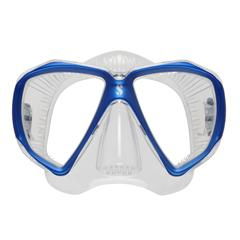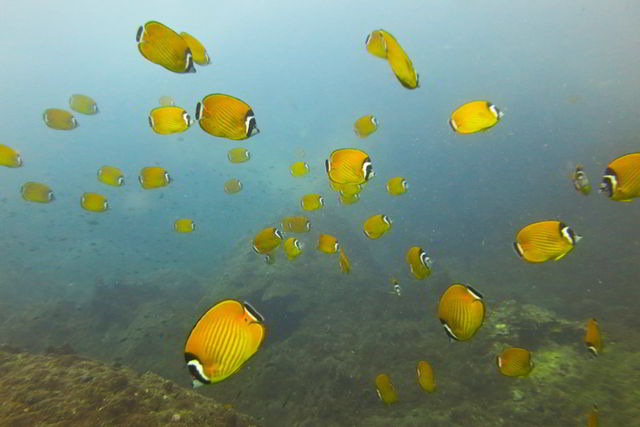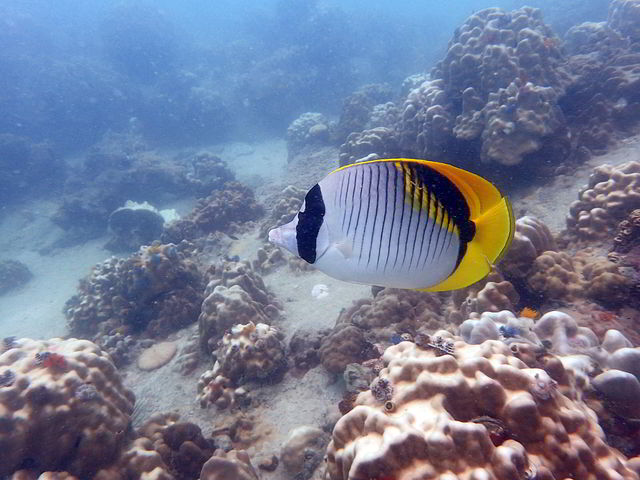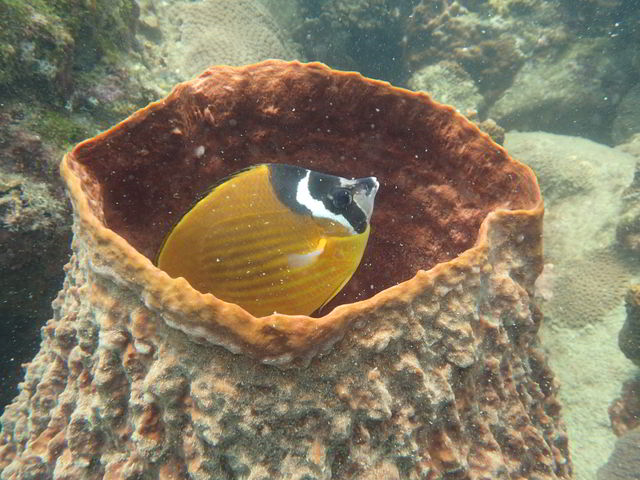- Home
- News
Shipwreck the HTMS Sattakut (LCI [Landing Craft Infantry] — 742) is one of the favorites and most visited dive sites at Koh Tao island, Thailand.
Dive site located at a 20 minutes distance from Koh Tao and it’s the most popular dive site for PADI Advanced Open Water Diver course and PADI Wreck specialty diving course.
At 48 meters in length, this former US World War II Navy vessel was commissioned into the Royal Thai Navy in 1947 where it served until it was decommissioned in 2007.
Previously, as a US Navy ship it most famously participated in The Battle of Iwo Jima — one of the fiercest and most strategic battles between the USA and Japan during World War II.
On the 18th June 2011 after cleaning and stripping the vessel of all toxins and hazardous materials, the Thai Department of Marine and Coastal Resources purpose-sank the ship just off the coast of Koh Tao as a new artificial reef and dive site.
Now, the Sattakut is home to large schools of Fusilier, various Snapper, Wrasse, Groupers, Trevally, Rabbitfish, Jenkins Whipray as well as small Blennies living in the small holes of the structure.
The wreck’s base sits in the sand at a maximum depth of between 27 and 30 meters (depending which end) while the top of the mast protrudes to a depth of approximately 18 meters — making this dive most suitable for divers with the PADI Advanced Open Water or above.
Over the past 5 years, the HTMS Sattakut Wreck has become a part of almost every PADI Advanced Open Water course, making it one of our most frequently visited dive sites in Koh Tao and Samui islands. It is also a perfect dive site for PADI Wreck Specialty course and technical diver training.
Well, you did try scuba diving in Koh Tao, in the most beautiful place for diving and snorkeling in Thailand, and decided to become a PADI certified diver.
You’ll be doing your course on the dive sites of the Gulf of Thailand and here are few tips from our instructors to help you get the most out of your Open Water Diver course:
— Listen to and watch your instructor. Briefing and skills' demonstration are doing for your benefits.
— Ask questions, do not be afraid to look stupid. There are no stupid questions when you are learning new things.
— Everything in your PADI diving course has a purpose (yes, the snorkel also), even if at the beginning you don’t understand what the reason is. Your instructor should explain why you are required to do this or that. He (she) is not asking you to do something for no reason.
— Relax. It is easy to say, not always easy to do. Almost everyone has problems when they start off. You can master your skills, we know this for sure.
— Don’t worry if you think you learn the skill not so quickly as another student in your group. All people are different. It doesn’t matter how quickly you complete a skill. Much more important you complete your diving course competently.
— Don’t confuse the Open Water course with «normal» diving. Some people get halfway through the course and decide diving is too complicated for them. On most «normal» dives in Koh Tao or Samui we don’t remove our regulators underwater, swim without masks and so on. The main reason for the skills we do on the course is to make you more confident diver, who can manage any situation.
— Enjoy your course. Remember: you decided to do it because diving is fun.
Stay within the limits of your training and experience
Divers must adhere to certain limits based on their certification. Sometimes you don’t understand why not to descend those few extra meters, but these limits were established for good reason. Exceeding your certification level can put you in a stressful environment that you’re not trained to handle. PADI also calculated these limits based on gas, depth, and physiological considerations. If you want to go deeper, think about advanced training.
Stay in good physical condition
You do not need to visit the gym every day, but it would be nice if you could take 30 steps with all your scuba gear and tank on without having to sit down and catch your breath. Although diving may not be as physical as some other sports activity, maintaining good physical condition is nonetheless important both on land and underwater, when situations like unexpected current can put your cardiovascular skills to the test.
Keep your equipment in good working order
Your scuba equipment is a highly technical gear that is responsible for keeping you alive, so take the extra time and spend the extra money to make sure it is functioning properly: service your equipment in accordance with the manufacturer’s recommendations, check it before every dive and clean (freshen) thoroughly after.
Master neutral buoyancy
Mastering neutral buoyancy not only makes you look professional, it also provides for longer bottom times. It saves your air, saves your energy, putting less stress on your body. And these can help to do your dive safer.
Have sufficient rest before a dive
Getting a good night’s sleep results in a healthy rested body. This, in turn, will help you resist the effects of harsh conditions, such as cold water. Being tired also slows your mind and body down, and makes you work harder than you normally would.
Stay hydrated and well nourished
Have a good breakfast, but leave a couple of hours after a meal before entering the water. Also, drink a lot of water before, between and after your dives. Just remember to use the restroom before you get in your wetsuit!
And finally: have fun and stay positive!
Single or Dual Lens?
When it comes to choosing your dive mask you have 2 options: single or dual lens.
Single lens masks don’t have any frame across the bridge of the nose so they normally seem more open.
Dual lens masks (also called «twin») have 2 separate lenses, which is great if you need to install prescription glasses as the lenses can be easily replaced on these models.
Mask Skirt
The skirt of a mask provides a good seal to keep air in and water out. Something simple but very important. Most of the best brands use high grade silicone to make their skirts and it’s been proven to be the best material for comfort and sealing.
You may notice that the majority of dive professionals have black skirted masks, this is because regular use of clear skirted masks can discolour slightly over time and show up dirt more easily.
Strap and Buckles
Diving masks come with a silicone strap and a buckle system that keeps the skirt close to the skin.
There are different types of buckles out there but the best models have moved the buckle attachment point into the skirt, instead of having it on the frame as the older models. This way, the skirt seals better as the stress transferred to the side of the mask is reduced.
Good Fit
It is most important to get a model that fits your face correct.
To find a good fit, do the following:
Put the mask over your face without straps. Inhale through your nose and shake your head a bit. If the mask stays in place, then it should create a seal for you. Adjust the strap and evaluate how the mask feels on your face — it should be comfortable. Try pinching your nose. Look around to see if there are any annoying blind spots. Try on several models.

Take Care of Your Mask
Most new masks’ lenses need a scrub before use because the glass gets stuff on it during manufacturing. Ask your instructor for recommendations and help.
Before every dive apply a defog solution to your mask lens.
After every use always rinse it with fresh water. Store your mask in a dry place and out of direct sunlight.
Butterflyfishes are thin, tall, and plate-like. They are opposite shape of a shark’s mouth, which illustrates how important a role predation has played in their evolution. To further avoid predation, the tail of most butterflyfish looks just like the head, and often they have a line over their eye for disguise. Together this confuses predators, who don’t know which way the fish is going to swim away.
Butterflyfish are the easiest fish to spot on our dive sites and usually occur in pairs but sometimes can be found in schools.
The most common for Koh Tao is the Lined Butterflyfish, which is one of the biggest butterflyfishes and can reach 30 cm in length,
Copperband Butterflyfish (also known as Beaked Coralfish) with a long narrow nose and beautiful copper and orange bands on white body,
Weibels Butterflyfish with bright yellow-orange body, they can be seen in large groups at Shark Island and is favorite amongst photographers.
Longfin Bannerfish which is often mistaken for a Moorish Idol (which belongs to the family of Zanclidae). The fish colored in black and white, with an elongated dorsal fin, sometimes reaching a length of 20 cm. The caudal, anal and pectoral fins are often bright yellow.

Butterflyfish feed on coral polyps, macro-invertebrates, and algae, so live only in healthy reef areas. In many areas they are a prized fish for the aquarium trade due to their bright colors, but on Koh Tao are mostly threatened by fishing activities or habitat destruction.




